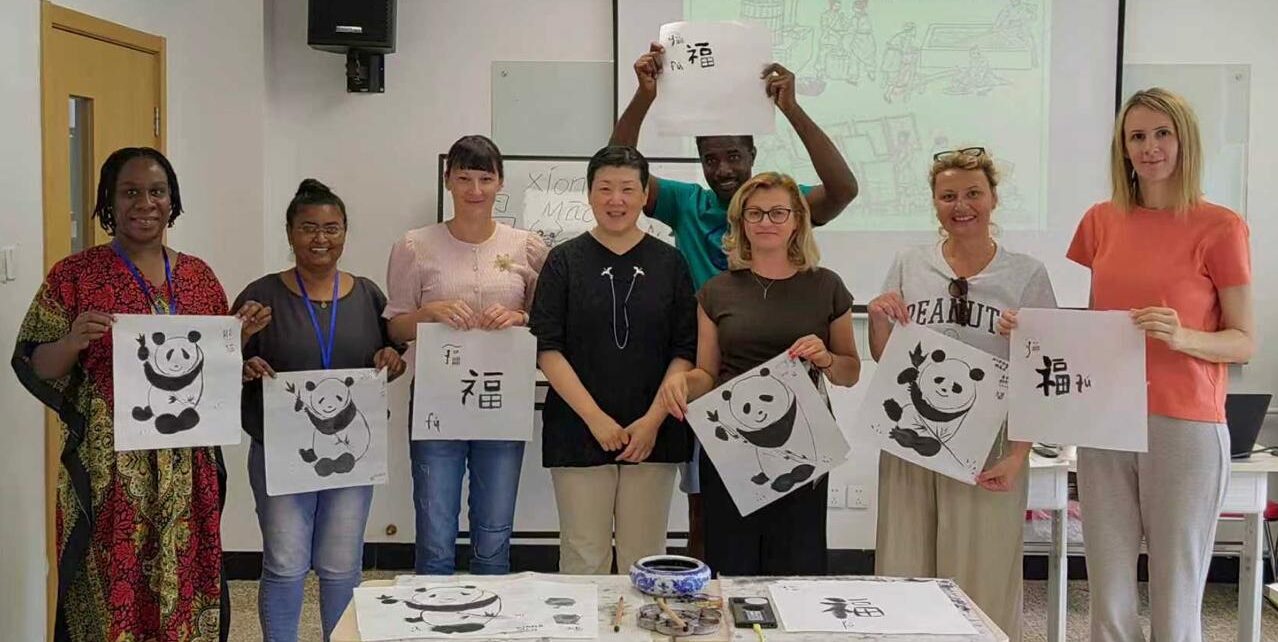by Nisha Paul
- Grenadian journalist participating in 4-month CIPCC programme
- Mastering just over 2,000 Chinese language characters is enough to read most modern texts
- Traditional Chinese ink is cornerstone of cultural identity and artistic expression
Being introduced to the Chinese language was my first step into a culture that has not only survived but thrived for thousands of years.
As a Grenadian journalist participating in the China International Press Communication Centre (CIPCC) programme, I quickly realised that this was more than an academic exercise; it was an immersion into China’s way of seeing and expressing the world. More than 100 reporters from over 90 countries are enrolled in this year’s 4-month programme, which blends lectures, field visits, Mandarin lessons, and cultural activities.
For me, the journey carries a personal weight. Grenada’s ties with China are visible back home in infrastructure projects, scholarships for students, and growing trade links. Yet, here in Beijing, I was getting to experience the cultural roots that make those connections more meaningful.
Our first session focused on Mandarin, or Hànyǔ, China’s official language, where we were guided through the basics — tonal pronunciation, Chinese characters, and counting from one to ten: yī (one), èr (two), sān (three), sì (four), wǔ (five), liù (six), qī (seven), bā (eight), jiǔ (nine), and shí (ten). I stumbled over tones more times than I can count, but I wasn’t alone. Laughter echoed around the room as journalists from across the globe struggled with similar challenges.
We also learned about China’s currency system, from the smallest coin of 10 cents (yī jiǎo) to the largest note of 100 yuan (yì bǎi kuài). Recognising everyday denominations like wǔ máo (50 cents) or wǔ kuài (5 yuan) suddenly made simple transactions less intimidating.
While the Chinese language has nearly 90,000 characters, officials said mastering just over 2,000 is enough to read most modern texts. Coming from Grenada, where our Creole reflects a blend of African and European roots, the contrast was striking. China has preserved its character-based system as a living thread to its ancient civilisation. But it wasn’t just about language and money. Our next session opened the door to China’s artistic soul, painting and calligraphy with traditional ink.
As Teacher Tao of the Beijing Language and Cultural Centre for Diplomatic Missions (LCC) explained, traditional Chinese ink is more than a medium; it is a cornerstone of cultural identity and artistic expression. Black ink, made predominantly from soot and animal glue, has long been standard for formal writing, scholarly texts, and artistic calligraphy, representing discipline and refinement. Red ink, often made from cinnabar, is reserved for official seals, ceremonial inscriptions, or corrections, reflecting hierarchy and authority. Preparing the ink itself — grinding a solid ink stick on an inkstone with water is considered a meditative ritual, requiring patience and focus before the brush touches paper.
China is unique in preserving its character-based writing system: “Only China continues its ancient picture or character writing to this day,” Teacher Tao told us with pride noting that other civilisations, such as Egypt, and India abandoned their pictorial scripts, while in Africa, picture/character-based scripts were broken off from daily use, surviving only in archaeology, rituals, or revival efforts.
The unification of characters under Emperor Qin Shi Huang Di in 221 BC laid the foundation for the first Chinese dictionary, replacing a system where multiple regional characters represented the same meaning.
During practice, participants experienced how subtle variations in brush pressure, stroke speed, and ink concentration could dramatically affect a character or painting, offering a hands-on lesson in both artistry and mindfulness.
Teacher Tao guided journalists through different schools of Chinese painting, from rock and landscape art to flower-and-bird depictions, highlighting contrasting techniques of fine brushwork and free brushwork. In the hands-on session, journalists tried free-brush painting of pandas and basic calligraphy strokes, experimenting with 2 main styles: the neat Kǎishū (standard script) and the free-flowing Cǎoshū (cursive), which some jokingly compared to a doctor’s hurried handwriting. Photographs displayed during the session included one of the earliest known paintings unearthed in China, illustrating the longevity of the country’s artistic heritage.
The combination of Mandarin lessons and traditional art workshops reflects a deliberate push by the CIPCC programme toward deeper cultural exchange. For China, it demonstrates soft power; for international journalists, it provides both professional and personal growth.
As I reflected on the experience, I realised that Grenada’s connection to China lies not only in trade agreements and infrastructure but also in the shared human curiosity about language and art. Struggling through Mandarin tones or experimenting with brushstrokes may seem lighthearted, but it represents something larger: how nations bridge differences through culture.
For me, finding common ground with a civilisation that has endured for thousands of years feels both humbling and inspiring.
NOW Grenada is not responsible for the opinions, statements or media content presented by contributors. In case of abuse, click here to report.




